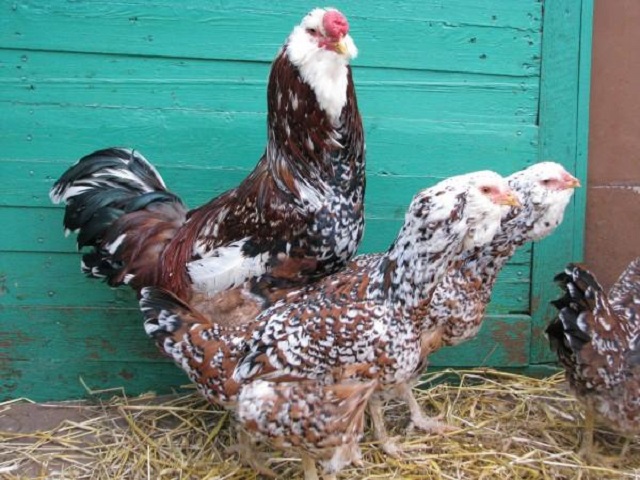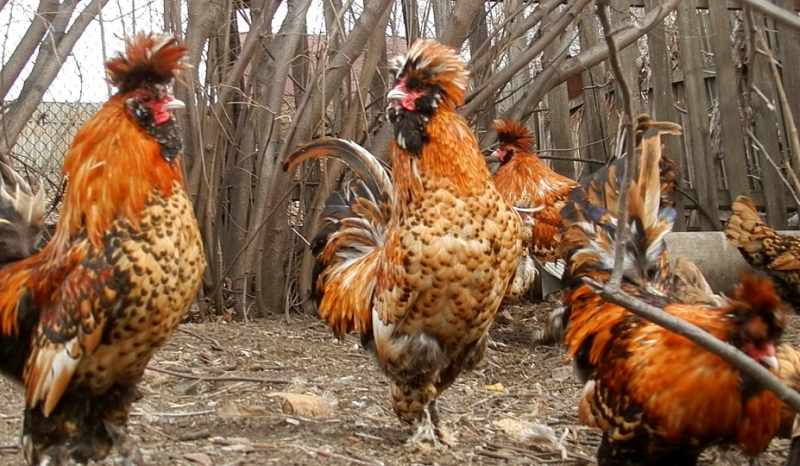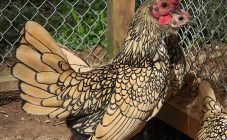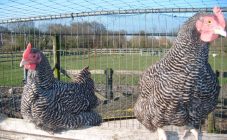Content:
It is difficult to imagine a peasant farmstead without poultry: geese, ducks, turkeys, guinea fowls and, of course, chickens have long and firmly taken their place next to man. People breed poultry for the sake of tasty and healthy meat, eggs, for decorative and sports purposes.
Origin and domestication
The origin of poultry species has been studied quite well, and scientists still argue about the time of domestication:
- It is believed that the very first man domesticated the goose. It happened in South Africa and modern Europe.
- The domestication of ducks dates back to the 3rd millennium BC.
- For a long time, there was an opinion that the ancestors of wild chickens lived in India, where they were domesticated about 3 thousand years ago. New studies of paleozoology show that humans raised chickens in China about 6 thousand years ago.
- The time of domestication of turkeys has not been established, but it is known that this bird was bred by the Maya Indians, and it came to Europe in the 16th century, after the development of the American continent.
- Guinea fowl, or "royal bird" was well known in ancient Rome, where it came from Africa, where it was domesticated about 3 thousand years ago.
- In the 20th century, the process of domestication continues. It is becoming more and more popular to breed quail for the sake of eggs and meat.
- The domestication of the ostrich, which was begun by indigenous African tribes, is proceeding at a rapid pace: ostrich farms are popular in many countries of Europe, America and Australia.
- Since olden times, man has used the ability of pigeons to accurately find their way home. Now there are a large number of breeds of domestic pigeons, including those of meat productivity.
- Pheasants, peacocks and swans are not officially recognized as poultry, but due to their beauty, they have been used by people for a long time in parks and gardens.
The history of the creation and distribution of the Oryol breed of chickens
The Oryol breed of chickens is a domestic breeding bird that you can be proud of. The history of the creation of the breed goes back to the end of the 18th century, when Count Alexei Orlov-Chesmensky, after winning the Russian-Turkish war, brought home a large livestock of overseas birds: Malay fighting and Persian bearded chickens, which in Russia were called Gilyan. Multiple crossing of imported chickens with local "eared" breeds (Russian or Ukrainian earflaps) and Bruges chickens led to the emergence in Russia of a breed that is unique in its exterior and productive qualities.
There are several versions of the origin of the name of the breed:
- The breed received the name of its creator - Count Orlov. This version is the most historically plausible.
- By the name of the city of Orel, where most of the livestock of this bird was concentrated. But the Oryol birds were popular in other areas of the center of Russia as well.
- According to the name of the town of Orlov, Vyatka province. At one time, the breed was simply called by the village inhabitants "Eagle chicken".
- According to the frowning gaze from under the powerful eyebrows and the hooked-curved beak, which made these birds look like an eagle.
With the name of the breed in the XVIII-XIX centuries. there was a lot of confusion: often the Orlovites were exhibited under the name of Gilan chickens even at official bird exhibitions. The Oryol breed was loved in Russia and extremely popular: both noble landowners and simple peasants bred birds. Its popularity peaked in the 1870s.
In the next 100 years, the breed was on the verge of extinction several times. The end of the 19th century is characterized by the filling of the poultry market in Russia with fashionable foreign breeds, which pressed local chickens. The massive fascination with the Brahmas and Cochinchins led to the fact that by the end of 1900 it became extremely difficult to find thoroughbred Orlovs in Russia.
This success became the reason that for some time in Russia the population of the Oryol bird grew. But the following years, the Civil and the Great Patriotic War, again brought to naught all previous achievements. After the war, only hybrid chickens remained in the country, which enthusiasts collected in the villages to begin the restoration of the breed.
Currently, interest in the Oryol breed is growing, many farmers and connoisseurs of exhibition poultry are engaged in breeding Orlov on private farms. VNIITIP in Moscow and VNIIGZH in St. Petersburg preserve the breed's gene pool in their collectors. The chintz variety of the Oryol chicken breed is registered by the Ministry of Agriculture. The difficulty lies in the fact that the standard of the Oryol breed, which was established in 1914 by the All-Russian Society of Poultry Farmers, cannot be achieved in modern conditions. New breed standards have not been finalized, which leads to heterogeneity of the livestock, concentrated among individuals and in research institutions.
Oryol chickens abroad
After the International Agricultural Exhibitions, foreign poultry farmers showed great interest in Russian chicken breeds. So in 1910-1912. Oryol people ended up in Germany and England, where in those years there were societies of Orlov bird lovers. After the Second World War, European breeders experienced the same difficulties with the breed bird, as in the USSR.
There was no purebred bird. The standards and a detailed description of the Oryol breed of chickens were lost, and this led to the fact that in Germany the selection of Orlovs went along its own path of development. The result was the German line of the Orlov breed, significantly different from the original bird in size and body weight. Despite this, the imported German Orlov took part in the restoration of the Orlov breed in the USSR.
Exterior features and breed standards
The characteristic of the exterior of the Oryol bird is unique, it showed the distinctive features of the original breeds:
- These are large and high-legged birds, with an upright body position - signs that they inherited from their Malay fighting ancestors. According to historical descriptions, adult Oryol roosters could "calmly peck food from the table." The live weight of a modern rooster reaches 5 kg or more, a chicken - 3-4 kg.
- A sign of fighting breeds is a pea-shaped or raspberry-shaped ridge located very low, hanging over the nostrils. In chickens, the comb is very weakly developed or absent.
- Orlovtsy have a very short and curved sharp beak, much shorter than that of other breeds, and a very wide frontal bone, which is also characteristic of a fighting bird.
- Amber, deep-set eyes, under strongly developed brow ridges, look predatory and aggressive.
- Lush sideburns inherited from the "eared" breeds - earflaps.
- Gilan Persian chickens gave the Orlov residents a beard.
- A distinctive feature of the Orlovets is a kind of plumage of the neck: a swollen mane near the head, closer to the body there is a narrowing.
- The neck is very long, with a high set, especially in roosters.
- The body is short and wide, tapering markedly towards the tail set at a 90 ° angle.
- The wings are medium, very tightly pressed to the body, the shoulders are wide, protruding forward.
- The chest is powerful, muscular and broad, the abdomen is flat and taut.
- Very long, thick legs, with impressive spurs (6-8 cm).
- The plumage of birds is dense and dense.
Compared to males, hens have a horizontal and elongated body, smaller size, tail set at an angle of more than 90˚ and a greater development of tanks and beards.
According to the breed standard, the color of the metatarsus, beak and skin must be yellow, otherwise the bird must be discarded.
Newborn chicks have yellow to light brown down plumage with black stripes on the back. The chicks have a well-differentiated tank and beard.
Oryol calico chickens are the most elegant and popular plumage color among breeders, which is determined by the presence of white, red and black feathers in the "shirt". In addition to calico, there are several options for coloring the plumage of Orlovs:
- white;
- mahogany (dark red-brown with black tan) with black and red breasts;
- black;
- scarlet black-breasted and brown-breasted;
- striped;
- clayey (pale brown);
- spotted (red and white);
Productive qualities
In the past centuries, the egg productivity of Orlovtsy could be called high. With the current level of development of industrial poultry farming and in comparison with crosses and breeds of the egg direction, the egg production of Orlov chickens is at an average level: 140-180 eggs per year. A medium-sized egg - 50-60 g, with a white-pink or creamy shell.
Fighting breeds belong to chickens of the meat production direction. They are able to build large muscle mass with a minimum amount of body fat. The meat of the Oryol chickens is fine-fibred, reminiscent of game in taste.
Advantages and disadvantages of the breed
An adult Oryol bird is very unpretentious in keeping: it easily tolerates severe frosts and damp weather, is resistant to diseases, and does not reduce egg production in winter. Chickens are well adapted to the harsh Russian winters of the past centuries.
Oryol chickens have a balanced character, roosters are aggressive, vigilantly watching their chicken "harem". The orlov hen instinct is absent, therefore breeding is possible only with the use of an incubator.
The disadvantages of the breed that must be taken into account if you want to get this bird and raise young animals include:
- Late maturity: layers are brought in much later than other breeds - at 7-8 months.
- Chicks grow slowly and fledge late.
- Low egg fertilization.
- Low viability of young animals in the first 2 months of life.
- The tendency to develop a crooked beak and curved legs.
Features of maintenance and feeding
Keeping and feeding adult Orlov chickens does not present any difficulties, however, when raising chickens, several important conditions must be observed:
- Due to the late feathering, the chickens are kept in a warm and dry room.
- The size of the feeder (for all ages) is made taking into account the short and curved beak of the birds.
- The young are provided with a place to move: the chickens must run, which promotes the development of muscles and is the prevention of bow-legged.
- In the warm season, young animals are kept in open-air cages.
- In feeding, in addition to grain and compound feed, use is made of bran mash, herbal cutting, shell, bone meal, vitamins. Chickens and adult males (if necessary, obtain a hatching egg) are given chopped eggs and cottage cheese.
- An adult bird tolerates frost well, so they can be kept in an unheated house, avoiding drafts. The floor is covered with straw or sawdust.
Despite the fighting exterior and origin, the Orlovs are not used as a fighting bird.This breed has a universal (meat and egg) direction of productivity and is bred as decorative. With proper care, the Orlov residents in the courtyard will bring only positive emotions to the owners. This proud and elegant bird will become an adornment of any poultry house. At agricultural exhibitions of the last decades, Oryol birds invariably win main prizes and diplomas.















